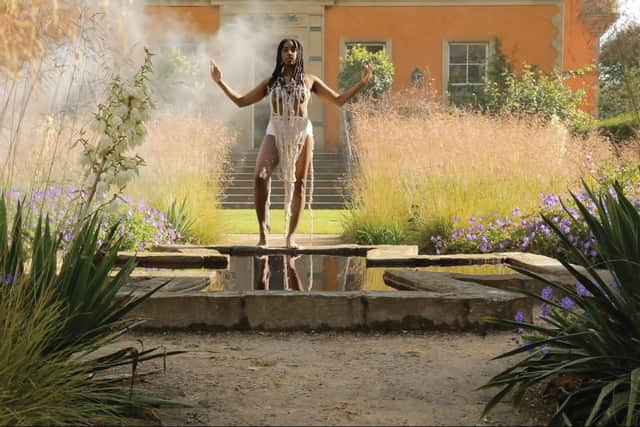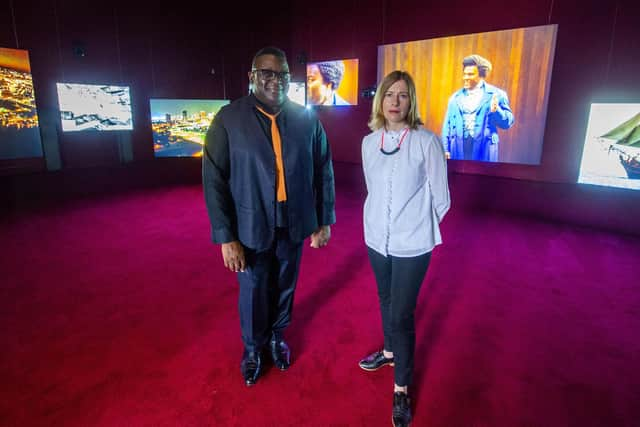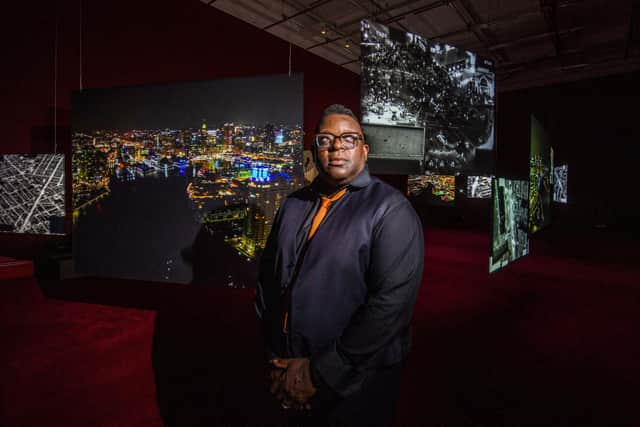19th century freedom fighter honoured as Edinburgh's visual art celebration gets underway
Isaac Julien's 10-screen work, which can be seen at the Scottish National Gallery of Modern Art, was partly made in Edinburgh and East Lothian in recognition of the crucial period in Frederick Douglass’s life after he arrived in Scotland as a fugitive from the United States.
Born into slavery in a Maryland plantation in 1818, he went on the run as a “fugitive slave” when he was 20, disguising himself as a sailor.
Advertisement
Hide AdAdvertisement
Hide AdHe became known as “Scotland’s anti-slavery agent” after around two years of abolitionist campaigning around Britain and Ireland while based in Edinburgh in the mid-1840s, and is now widely regarded as one of the most important figures in effort to end slavery in America.
Julien’s film, which is accompanied by a series of large-scale photographic works depicting Douglass and his wife Anna Murray Douglass, who helped free hundreds of people from slavery, draws on some of his most important speeches, as well as modern-day events, including FBI surveillance in Baltimore.
Julien said: "It’s a great honour to be able to show Lessons of the Hour in Edinburgh as part of the festival.
"Frederick Douglass lived in the city for almost two years and had an enormous capacity here to communicate the campaign for the abolition of slavery. He was a freedom fighter – basically campaigning for the freedom of his own people.
“Edinburgh was very much the place where he began back to the United States as free man, as opposed to a fugitive slave.


“Douglass has very much inspired me in relation to my work and my relationship to photography, film and images. He was at the forefront of thinking about technology and photography.
“Black people are still struggling for a kind of humanity and to be seen as humans today. Douglass’s work gives a legacy to these struggles.”
Advertisement
Hide AdAdvertisement
Hide AdThe art festival’s programme encompasses 35 different exhibitions and commissions across the city, including displays of work St Giles’ Cathedral and the French Institute on the Royal Mile, billboards beside Waverley Station and a wildlife garden in the shadow of Edinburgh Castle.
The Burns Monument on Calton Hill is playing host to a Brexit-inspired installation by Nigerian sound artist Emeka Ogboh featuring renditions of Auld Lang Syne in the languages of the EU member states.


Leading contemporary artists showing work include Christine Borland at the Royal Botanic Garden, Alberta Whittle and Rachel Maclean at Jupiter Artland, Alison Watt at the Scottish National Portrait Gallery, and Karla Black at the Fruitmarket.
Festival director Sorcha Carey said: “Museums and galleries have worked very hard to make sure that they can put in place the conditions for people to return safely at the moment.
"People have been thinking very carefully about the capacities of venues, asking people to wear masks and being careful in keeping their distancing from their fellow visitors.
"I think there’s now a real desire to engage with art in the real world. There’s been amazing digital programming happening, which has opened up possibilities for lots of new audiences, but that very personal encounter you get with an artwork in a gallery is so important.”


A message from the Editor:
Thank you for reading this article. We're more reliant on your support than ever as the shift in consumer habits brought about by coronavirus impacts our advertisers.
If you haven't already, please consider supporting our trusted, fact-checked journalism by taking out a digital subscription.
Neil McIntosh
Editor
Comments
Want to join the conversation? Please or to comment on this article.